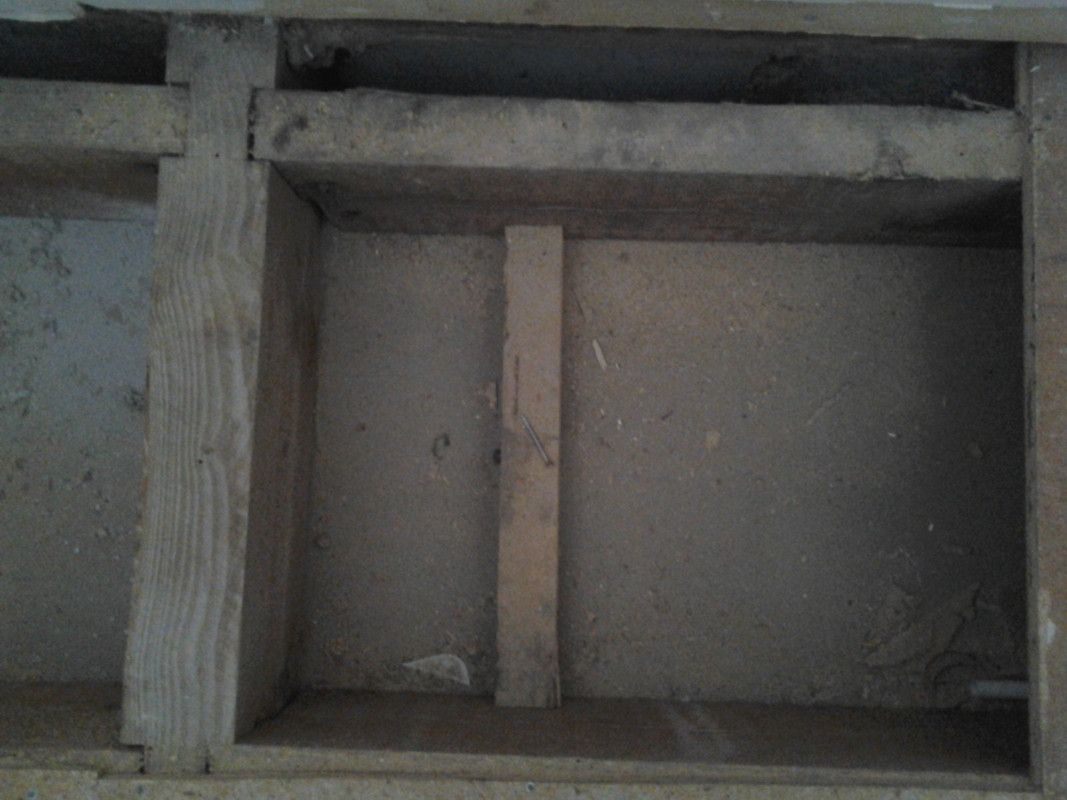I had to remove portions of the existing subfloor chipboard panels (18mm depth), which now I need to replace (I already bought a new P5 panel).
The problem is that one edge of the hole is irregular, and I'm worried that parts of the new chipboard won't have sufficient resting contact with the joists to provide enough support.
Particularly around the lower-right corner in the pics, where the exposed joist surface is really thin.
What is a good strategy in these situations? I would really want to avoid removing the surrounding subfloor.
Thanks!



The problem is that one edge of the hole is irregular, and I'm worried that parts of the new chipboard won't have sufficient resting contact with the joists to provide enough support.
Particularly around the lower-right corner in the pics, where the exposed joist surface is really thin.
What is a good strategy in these situations? I would really want to avoid removing the surrounding subfloor.
Thanks!





